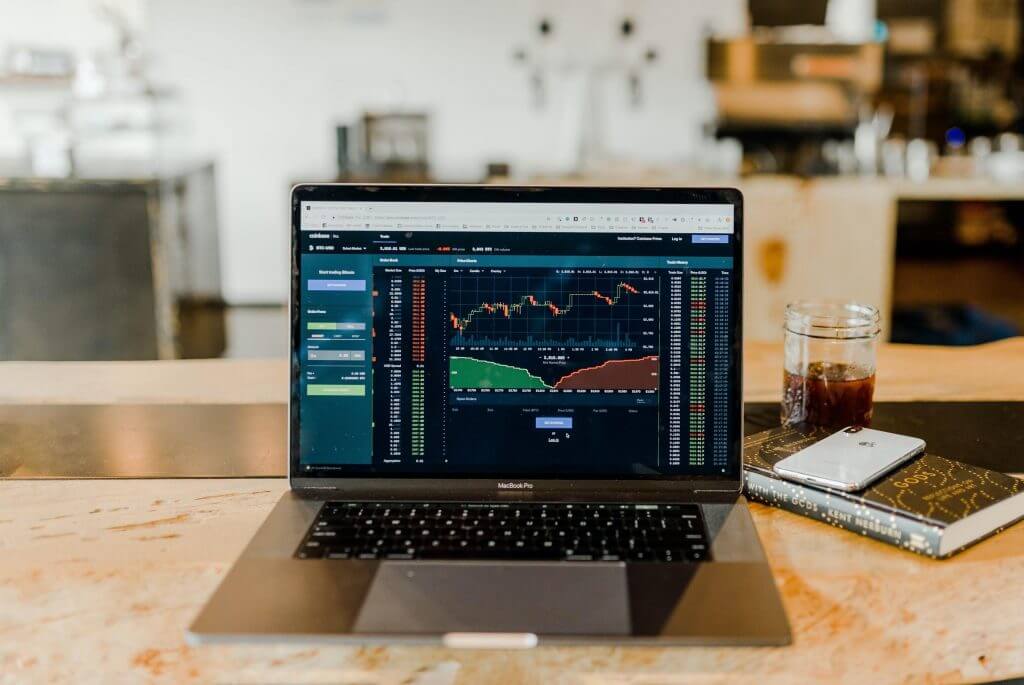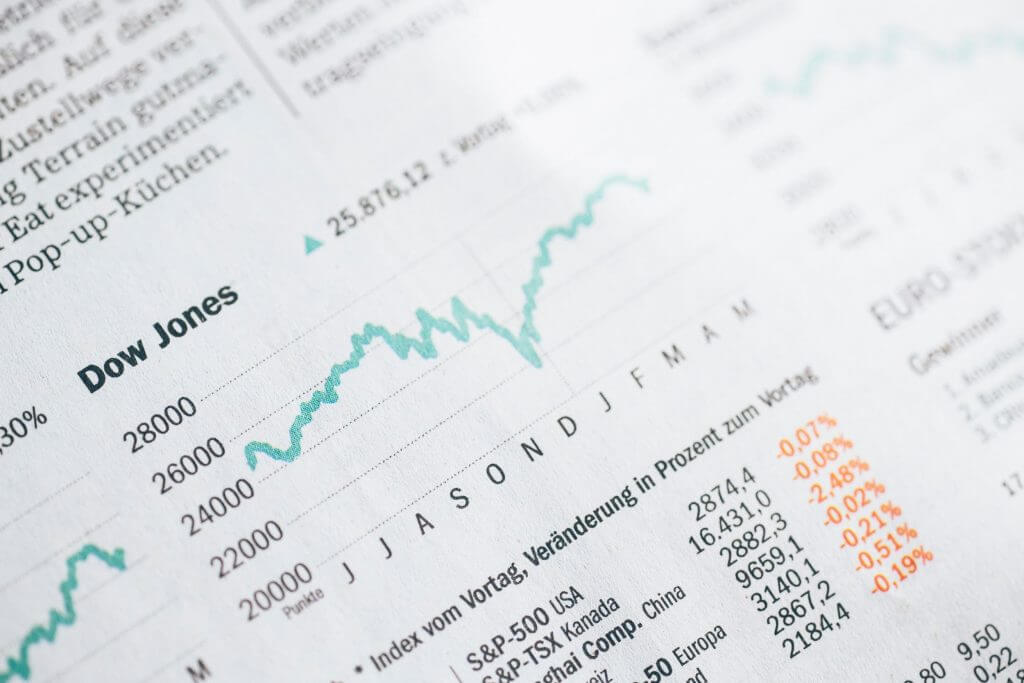The mystery and allure behind investment trading can be daunting for young, green professionals. The stock market is an unquestionably challenging facet saving or investing towards retirement, and should be respected, especially if you don’t have comprehensive knowledge of market sectors and industries.
However, everyone has to start somewhere; nobody becomes Gordon Gecko or Jordan Belfort overnight. So below is a compilation of concepts and terminology that are essential for any budding trader trying to get his or her feet wet. Follow this guide to learn beginner’s lingo to start investing money in the stock market.
Stocks Trading Terms
Risk vs. Return:
It is impossible to properly trade or invest in the stock market without first understanding the stakes of the situation. Most people do not trade in the stock market for fun or pleasure, but to build up their retirement or savings. There is inherent risk that comes with all forms of investing into a company with whom you do not have control over.
Risks and rewards characterize financial markets. These two elements are strongly related, and their goal depends on individual needs. Regardless of the assets you invest in, you need to weigh possible risks and assess rewards. Understanding the two terms can help you make a wise investment decision.
Typically investments come with risk or volatility, which simply means that returns are unpredictable on an extended timeline. In most cases, stocks with high risk create high returns in the long-term investing, while lower-risk investments have lower returns. Some of the high return investments include mutual funds, stocks, bonds, and hard assets.
The Increased Risk/Reward of Day Trading:
Day trading requires very astute money management skills. Sometimes it’s easy to assume that winning more trades than you lose equates to profit. That is not always the case. As a day trader, you should assess the quality of your wins and losses. Maintaining quality in your day trading means your risk-reward ratio, acceptable risks, win-loss ratio, and acceptable losses are considered when creating a bid.
Taking all these aspects into account can help you balance between your risk-reward and win-rate ratios. Typically, you should strive for a win-rate of anything between 50 and 70 percent with risk/reward ratios between 0.60 and 1.0, depending on the win rates.
Market Volatility:
Market volatility refers to price fluctuations in the stock market. It defines how rapid the prices of securities rise and fall. When the variations are high, the market volatility increases.
Buying and Selling:
Buying is when you place a trade to acquire shares of a company with the expectation prices will go up. On the other hand, selling is to get rid of assets you purchased earlier, either because you want to minimize your losses, you expect a fall in prices, or you’ve achieved your financial goals.
Return on Investment (ROI):
This is why anyone trades in the market. Your return on investment simply means how much you made when you sold, based on your position when you originally purchased the stock or fund. The historical average stock market return is 10%, and while returns now are currently higher due to a more volatile market, which that also means the risk is higher as well.
Yield:
Yield can be defined as the measure of total returns on an investment over a given period. It’s presented as a percentage, and its calculation is based on the current market value, face value of the investment, or the invested amount. Yield includes the dividends received or interest earned from holding the security.
Bids:
A bid represents the highest proposed price you are willing to pay for a share.
Asking Price:
Asking Price represents the minimum price that people selling shares are willing to get for their shares.
Quote:
A stock quote provides all the essential information you should know regarding the symbols and terms of the stock. The details include the asking price, its bid, volume traded, and the last traded price.
Portfolio:
A portfolio is a collection of financial assets owned by an investor. These assets include bonds, currencies, stocks, commodities, and cash equivalents. Sometimes a portfolio can consist of non-publicly tradable investments such as real estate, private investments, and art.
Assets vs. Liabilities:
Assets and liabilities play a crucial role when it comes to company profitability and long-term investing. People who deal with assets and liabilities need a solid understanding of the two elements to attain satisfactory results. Assets represent all types of company receivables and resources that generate revenue to a company.
These resources often help enhance profitability, reduce expenses, and generate steady cash flows because they can be turned into cash or convert raw materials into cash equivalents. Assets can also be sold to provide quick economic value. In accounting, assets are recorded on the left part of the balance sheet. Assets include inventory, cash, machinery, investments, and real estate.
On the other hand, liabilities consist of all kinds of account payables. Typically, this is a financial obligation a business entity must meet. These obligations tend to contribute significantly to financial expansion and ensure the smooth running of a company’s daily operations. Usually, liabilities exist in two types – limited and unlimited liabilities.
Limited liabilities don’t require investors to compensate for the venture liability completely. Unlimited liabilities, on the other hand, require owners to pay off the obligation entirely. Total liabilities are calculated by subtracting equity from total assets. Examples of liabilities are wages owed, bank debt, money owed to suppliers, and mortgage debt.
Saving vs. Investing:
When it comes to money management, these two terms play a vital role in accumulating financial resources. In most cases, the terms can be used interchangeably, but they also have distinct differences. The main difference between saving and investing is the amount of wealth they build over time. They are both used to achieve specific goals and are used in varying time horizons.
Saving is often considered a safe way of building finances. It involves placing hard, cold cash aside to be used on minimal notice. In stocks, you can save through T-Bills, cash, or money market accounts. Savings can be used as an emergency fund or to make a huge purchase.
Investing entails a long term process of building finances. This is where you buy and hold assets so that they can increase from compound interest. Investment options include property, bonds, stocks, and index funds. Most people invest to accumulate wealth and save for their retirement.
Fiscal Quarters, Years:
Most companies operate in two accounting periods: the fiscal quarter and the fiscal year. Most companies’ fiscal year runs from 1st January to 31st December. A fiscal quarter refers to three months (in the financial calendar) for periodic financial reports. Analysts and investors use data from the fiscal quarters to evaluate trends and make comparisons. Many companies in the country that pay dividends distribute the payments more evenly across four quarters.
The Difference and between a ‘Bull’ and ‘Bear’ Market:
A bull market is defined by a market condition where prices are going up aggressively. It is characterized by high expectations, optimism, and high confidence from investors. Primarily, as the market starts to improve, greed increases in the stocks and more people tend to invest in the market. Several factors contribute to a bull market, but the most common include high employment levels and a strong economy.
During the recovery from the recession, the stock market saw the end of a bearish condition in 2008, and the American market experienced the start of a bull market in 2009. The bull market has since made the highest records in history. The market is led by top tech firms like Microsoft, Apple, Amazon, Google, and Facebook.
A bear market, on the other hand, is the one showing possibilities of decline. Low expectations and pessimism characterize the bear market. In a bear market, share prices are falling, and seasoned investors feel the trend will continue. This situation can last for any period from weeks to several years, depending on a specific situation and contributing factors.
A typical example of a bear market is the 1987 market crisis, where the prices of securities dropped by a whopping 29.6 percent. This condition lasted for about three months.
Photo courtesy of John Roth. All rights reserved.
Liquidity:
Liquidity can be defined as the market flexibility, which tells how easily and quickly you can buy or sell shares.
Initial Price Offering (IPO):
IPO can be defined as giving shares of a private firm to the public, which allows the corporation to raise money from public investors. An IPO is usually a hallmark event for a company to transition from being privately owned, to publicly traded.
A recent notable example of successful IPOs is Alibaba, dubbed the ‘biggest IPO in the world.’ They debuted at $68 per share but closed at $93.89 on the first day of trading, and the stock has surged 161% since its IPO.
Other recent IPOs that made headlines include popular mobile apps Facebook and Uber, both of whom had lackluster debuts, but have successfully rebounded since.
Difference between ‘Blue-Chip’ and ‘Penny’ Stocks:
Blue Chip stocks are referred to as large companies that offer steady earnings year after year. Some of the blue-chip stocks include McDonald’s Corp., British American Tobacco, Alibaba Group Holdings, and Johnson & Johnson.
Penny Stocks:
Penny stocks are issued by firms with little financial history or that have high closure possibilities. People who invest in penny stocks count on the probability of getting their returns. Penny stocks include Conatus Pharmaceuticals, Inuvo, IZEA Worldwide, and Genius Brands Intl.
The Differences between Traditional Stocks and ETFs, CDs, and ADRs:
Traditional stocks are when an investor puts money into popular assets such as real estate, equity shares, and bonds with the expectation of earning interest and dividends.
- Exchange Trade Funds refers to a grouping of securities that trade in the form of an exchange. They are characterized by fewer broker fees and low expense ratios.
- Certificates of Deposits are considered a relatively safe investment. They are given by credit unions and banks and operate more like common savings accounts, although they offer higher interest rates.
- American Depository Receipts are certificates given by an American bank representing foreign stock shares.
International Currencies:
The currency of a country gets stronger when its value rises against other currencies. For instance, a rise of the dollar can negatively impact U.S businesses that export products to other countries. As their goods are valued in dollars, they become more expensive for companies and consumers who use different currencies.
In the long-run, this will affect a company’s profitability, which will impact investor dividends and interests. Strengthening of the dollar can equally harm U.S based firms. This is true because when the dollar rises, American consumers can import or buy imported products at lower prices, which can hurt the market of American-made goods.
Dividends and Margins:
A dividend is part of a company’s income that is paid quarterly or annually to the shareholders.
A margin account allows an individual to borrow money from a broker to invest in shares. The difference between the security price and the loan amount is called a margin.
What is a Stock Chart, and the Different Stock Exchanges?
Although stock charts are a vital part of the money market, understanding them can be daunting. Learning and understanding stock charts can help you know how to use them to buy stocks, spot the perfect time to buy/sell and find winning stocks.
A stock exchange is a physical brick-and-mortar location where investors trade positions in person. The most significant example is the New York Stock Exchange, but there are also locations in London, Shanghai, Hong Kong, and several other economic hot spots.
Important Metrics that a Stock Trader Needs to Be Aware of:
As a stock trader, knowing how to evaluate your strategies can be helpful. There are plenty of metrics to use; some of the best include the risk-to-reward, which tells you the number of times you lose on a standard losing trade versus your gain on a winning trade. You can also use the net profit/loss metric to evaluate your losses and profits.
Interest is the amount payable on a loan or investment upon maturity date. Your interest can be calculated in two ways; simple or compound.
Simple interest – This is quite simple and is determined as a percentage of the principle. For instance, if you borrow $2,000 at 7 percent simple interest for six years, your interest amount will be $840.
Compound interest – Most financial institutions usually use compound interest to calculate interest. Compound interest grows exponentially based on the balance of the principal over the span of either days, months, or years
The Importance of Investing Early and the Long-Term Impacts:
If you want to retire with confidence and get the best out of your life, you should start investing early. Starting to save earlier can help you get prepared financially. Nobody knows what tomorrow holds, and since life is full of surprises, financial preparedness is the way to go. It also gives you compound growth, which is an excellent boost to your savings.
Investing earlier can help you cover unexpected market risks. Market downturns can send even the most experienced trader swindling down. That means that if you start saving earlier, you will have time to make up for such uncertainties.



